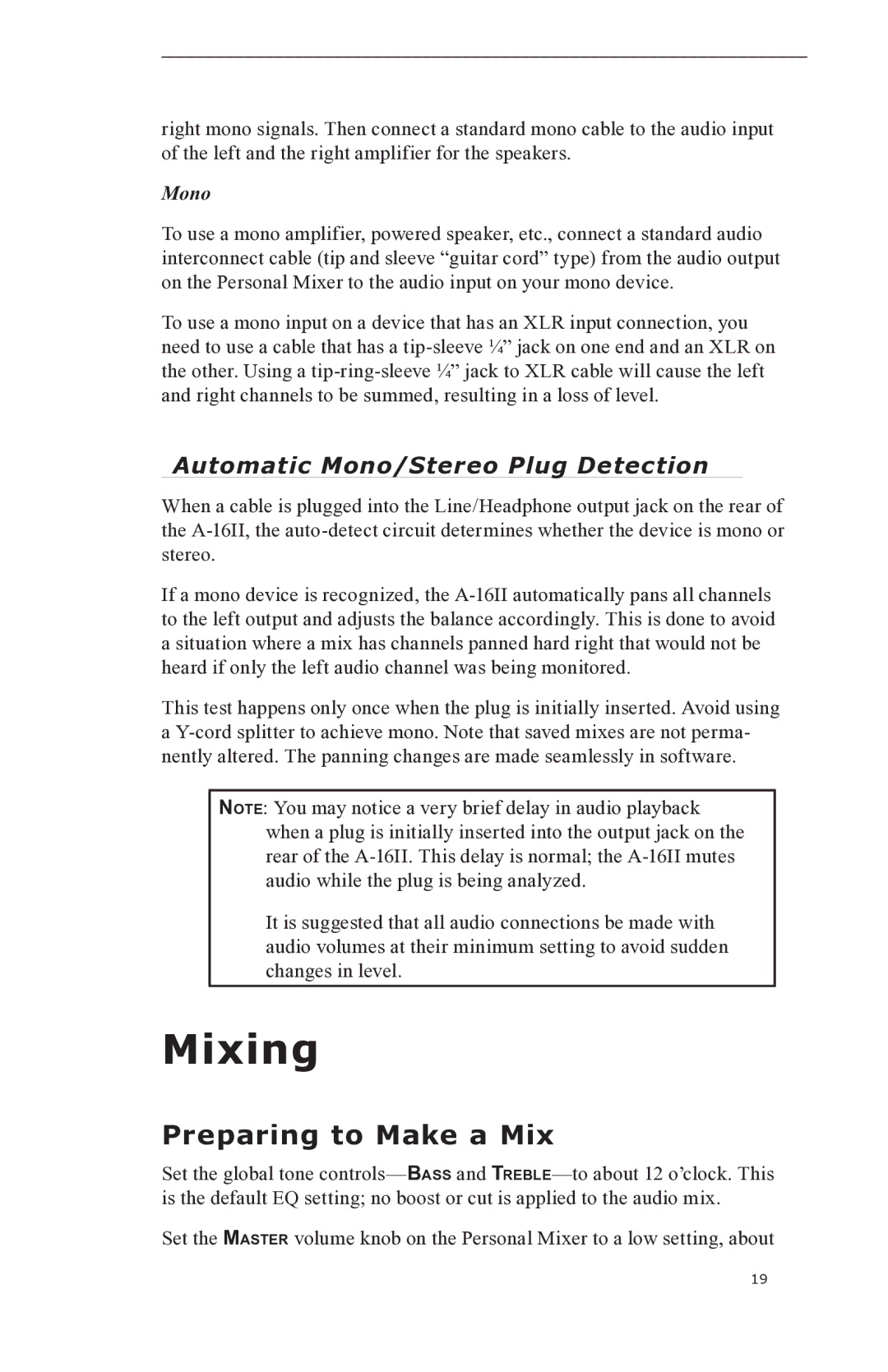
right mono signals. Then connect a standard mono cable to the audio input of the left and the right amplifier for the speakers.
Mono
To use a mono amplifier, powered speaker, etc., connect a standard audio interconnect cable (tip and sleeve “guitar cord” type) from the audio output on the Personal Mixer to the audio input on your mono device.
To use a mono input on a device that has an XLR input connection, you need to use a cable that has a
Automatic Mono/Stereo Plug Detection
When a cable is plugged into the Line/Headphone output jack on the rear of the
If a mono device is recognized, the
This test happens only once when the plug is initially inserted. Avoid using a
NOTE: You may notice a very brief delay in audio playback when a plug is initially inserted into the output jack on the rear of the
It is suggested that all audio connections be made with audio volumes at their minimum setting to avoid sudden changes in level.
Mixing
Preparing to Make a Mix
Set the global tone
Set the MASTER volume knob on the Personal Mixer to a low setting, about
19
